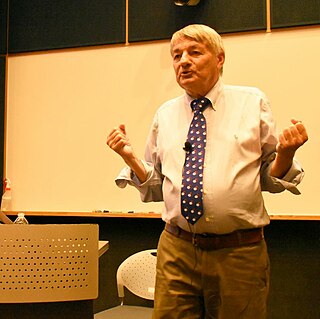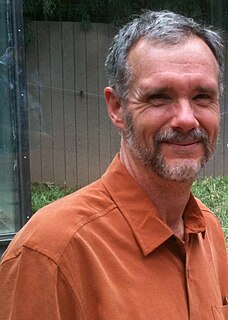
A circadian rhythm, or circadian cycle, is a natural, internal process that regulates the sleep–wake cycle and repeats roughly every 24 hours. It can refer to any process that originates within an organism and responds to the environment. These 24-hour rhythms are driven by a circadian clock, and they have been widely observed in plants, animals, fungi, and cyanobacteria.

Chronobiology is a field of biology that examines timing processes, including periodic (cyclic) phenomena in living organisms, such as their adaptation to solar- and lunar-related rhythms. These cycles are known as biological rhythms. Chronobiology comes from the ancient Greek χρόνος, and biology, which pertains to the study, or science, of life. The related terms chronomics and chronome have been used in some cases to describe either the molecular mechanisms involved in chronobiological phenomena or the more quantitative aspects of chronobiology, particularly where comparison of cycles between organisms is required.

The suprachiasmatic nucleus or nuclei (SCN) is a tiny region of the brain in the hypothalamus, situated directly above the optic chiasm. It is responsible for controlling circadian rhythms. The neuronal and hormonal activities it generates regulate many different body functions in a 24-hour cycle. The mouse SCN contains approximately 20,000 neurons.

Melanopsin is a type of photopigment belonging to a larger family of light-sensitive retinal proteins called opsins and encoded by the gene Opn4. In the mammalian retina, there are two additional categories of opsins, both involved in the formation of visual images: rhodopsin and photopsin in the rod and cone photoreceptor cells, respectively.
A circadian clock, or circadian oscillator, is a biochemical oscillator that cycles with a stable phase and is synchronized with solar time.
Melatonin receptors are G protein-coupled receptors (GPCR) which bind melatonin. Three types of melatonin receptors have been cloned. The MT1 (or Mel1A or MTNR1A) and MT2 (or Mel1B or MTNR1B) receptor subtypes are present in humans and other mammals, while an additional melatonin receptor subtype MT3 (or Mel1C or MTNR1C) has been identified in amphibia and birds. The receptors are crucial in the signal cascade of melatonin. In the field of chronobiology, melatonin has been found to be a key player in the synchrony of biological clocks. Melatonin secretion by the pineal gland has circadian rhythmicity regulated by the suprachiasmatic nucleus (SCN) found in the brain. The SCN functions as the timing regulator for melatonin; melatonin then follows a feedback loop to decrease SCN neuronal firing. The receptors MT1 and MT2 control this process. Melatonin receptors are found throughout the body in places such as the brain, the retina of the eye, the cardiovascular system, the liver and gallbladder, the colon, the skin, the kidneys, and many others. In 2019, crystal structures of MT1 and MT2 were reported.

Gene David Block is an American biologist, academic, inventor, and chancellor of the University of California, Los Angeles. Block has served as provost and professor of biology at the University of Virginia. While at the University of Virginia, Block interacted with Randy Pausch and is mentioned in his memoir, The Last Lecture.
In the study of chronobiology, entrainment occurs when rhythmic physiological or behavioral events match their period to that of an environmental oscillation. It is ultimately the interaction between circadian rhythms and the environment. A central example is the entrainment of circadian rhythms to the daily light–dark cycle, which ultimately is determined by the Earth's rotation. Exposure to certain environmental stimuli will cue a phase shift, and abrupt change in the timing of the rhythm. Entrainment helps organisms maintain an adaptive phase relationship with the environment as well as prevent drifting of a free running rhythm. This stable phase relationship achieved is thought to be the main function of entrainment.
Joseph S. Takahashi is a Japanese American neurobiologist and geneticist. Takahashi is a professor at University of Texas Southwestern Medical Center as well as an investigator at the Howard Hughes Medical Institute. Takahashi's research group discovered the genetic basis for the mammalian circadian clock in 1994 and identified the Clock gene in 1997. Takahashi was elected to the National Academy of Sciences in 2003.
Steven M. Reppert is an American neuroscientist known for his contributions to the fields of chronobiology and neuroethology. His research has focused primarily on the physiological, cellular, and molecular basis of circadian rhythms in mammals and more recently on the navigational mechanisms of migratory monarch butterflies. He was the Higgins Family Professor of Neuroscience at the University of Massachusetts Medical School from 2001 to 2017, and from 2001 to 2013 was the founding chair of the Department of Neurobiology. Reppert stepped down as chair in 2014. He is currently distinguished professor emeritus of neurobiology.
A chronobiotic is an agent that can cause phase adjustment of the body clock. That is, it is a substance capable of therapeutically entraining or re-entraining long-term desynchronized or short-term dissociated circadian rhythms in mammals, or prophylactically preventing their disruption following an environmental insult such as is caused by rapid travel across several time zones. The most widely recognized chronobiotic is the hormone melatonin, secreted at night in both diurnal and nocturnal species.

Fred W. Turek is the Director of the Center for Sleep & Circadian Biology and the Charles E. & Emma H. Morrison Professor of Biology in the Department of Neurobiology, both at Northwestern University. Turek received his Ph.D from Stanford University. He was awarded a Guggenheim Fellowship in 1991.
Michael Menaker, was an American chronobiology researcher, and was Commonwealth Professor of Biology at University of Virginia. His research focused on circadian rhythmicity of vertebrates, including contributing to an understanding of light input pathways on extra-retinal photoreceptors of non-mammalian vertebrates, discovering a mammalian mutation for circadian rhythmicity, and locating a circadian oscillator in the pineal gland of bird. He wrote almost 200 scientific publications.
Ueli Schibler is a Swiss biologist, chronobiologist and a professor at the University of Geneva. His research has contributed significantly to the field of chronobiology and the understanding of circadian clocks in the body. Several of his studies have demonstrated strong evidence for the existence of robust, self-sustaining circadian clocks in the peripheral tissues.

Douglas G. McMahon is a professor of Biological Sciences and Pharmacology at Vanderbilt University. McMahon has contributed several important discoveries to the field of chronobiology and vision. His research focuses on connecting the anatomical location in the brain to specific behaviors. As a graduate student under Gene Block, McMahon identified that the basal retinal neurons (BRNs) of the molluscan eye exhibited circadian rhythms in spike frequency and membrane potential, indicating they are the clock neurons. He became the 1986 winner of the Society for Neuroscience's Donald B. Lindsley Prize in Behavioral Neuroscience for his work. Later, he moved on to investigate visual, circadian, and serotonergic mechanisms of neuroplasticity. In addition, he helped find that constant light can desynchronize the circadian cells in the suprachiasmatic nucleus (SCN). He has always been interested in the underlying causes of behavior and examining the long term changes in behavior and physiology in the neurological modular system. Recently, McMahon helped identify a novel retrograde neurotransmission system in the retina involving the melanopsin ganglion cells in retinal dopaminergic amacrine neurons.
Hitoshi Okamura is a Japanese scientist who specializes in chronobiology. He is currently a Professor of Systems Biology at Kyoto University Graduate School of Pharmaceutical Sciences and the Research Director of the Japan Science Technology Institute, CREST. Okamura's research group cloned mammalian Period genes, visualized clock oscillation at the single cell level in the central clock of the SCN, and proposed a time-signal neuronal pathway to the adrenal gland. He received a Medal of Honor with Purple Ribbon in 2007 for his research and was awarded Aschoff's Ruler for his work on circadian rhythms in rodents. His lab recently revealed the effects of m6A mRNA methylation on the circadian clock, neuronal communications in jet lag, and the role of dysregulated clocks in salt-induced hypertension.

William Joseph Schwartz is an American neurologist and scientist who serves as Professor and Associate Chair for Research and Education in the neurology department at the University of Texas Dell Medical School. His work on the neurobiology of circadian timekeeping has focused on the mammalian suprachiasmatic nucleus. Schwartz demonstrated that the suprachiasmatic nucleus is rhythmic in vivo using a 2-deoxyglucose radioactive marker for functional brain imaging. As of 2014, he is editor of the Journal of Biological Rhythms.
Robert Y. Moore is an American neurologist with interests in disorders of biological rhythms, movement disorders, and behavioral neurology. He is credited with discovering the function of the suprachiasmatic nucleus (SCN) as the circadian clock, as well as, describing its organization. He is also credited with establishing the role of the mammalian retinohypothalamic tract (RHT) as a photic entrainment pathway. Moore cin 2017 serves as a professor of neurology, with a secondary in psychiatry and neuroscience at the University of Pittsburgh, and as co-director of the National Parkinson Foundation Center of Excellence at the University of Pittsburgh.

John Stuart O’Neill is a British molecular and circadian biologist. O’Neill is currently a Principal Investigator at the MRC Laboratory of Molecular Biology in Cambridge, United Kingdom. His work focuses on the fundamental mechanisms that sustain circadian rhythms in eukaryotic cells.
Rae Silver is a Canadian behavioral neuroendocrinologist and neuroscientist best known for her research on the role of the suprachiasmatic nucleus (SCN) of the hypothalamus in generating circadian rhythms, the role of mast cells in the brain, the physiological mechanisms of parental behavior in ring doves. She is currently the Helene L. and Mark N. Kaplan Professor of Natural & Physical Sciences and is currently the Chair of the Neuroscience Program and Professor of Psychology at Barnard College. In addition, she is jointly appointed as a Professor in the Department of Psychology at Columbia University and in the Department of Pathology and Cell Biology with the Columbia College of Physicians and Surgeons.









